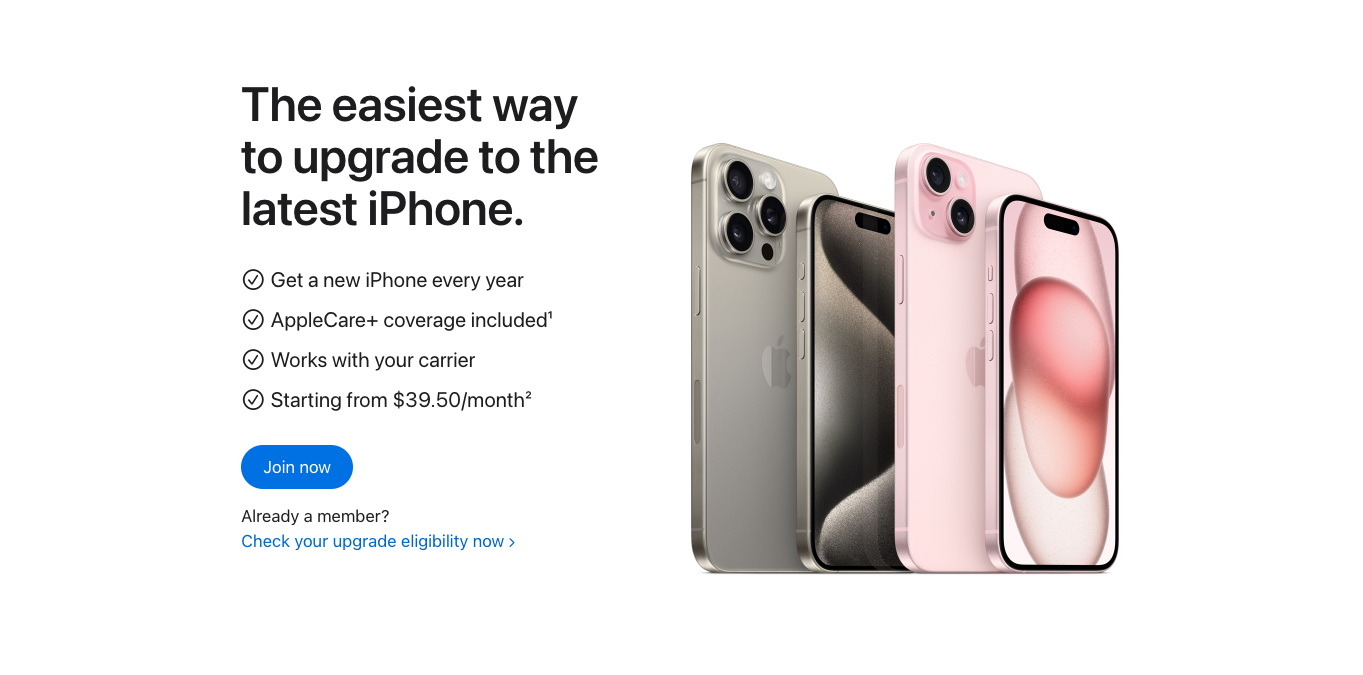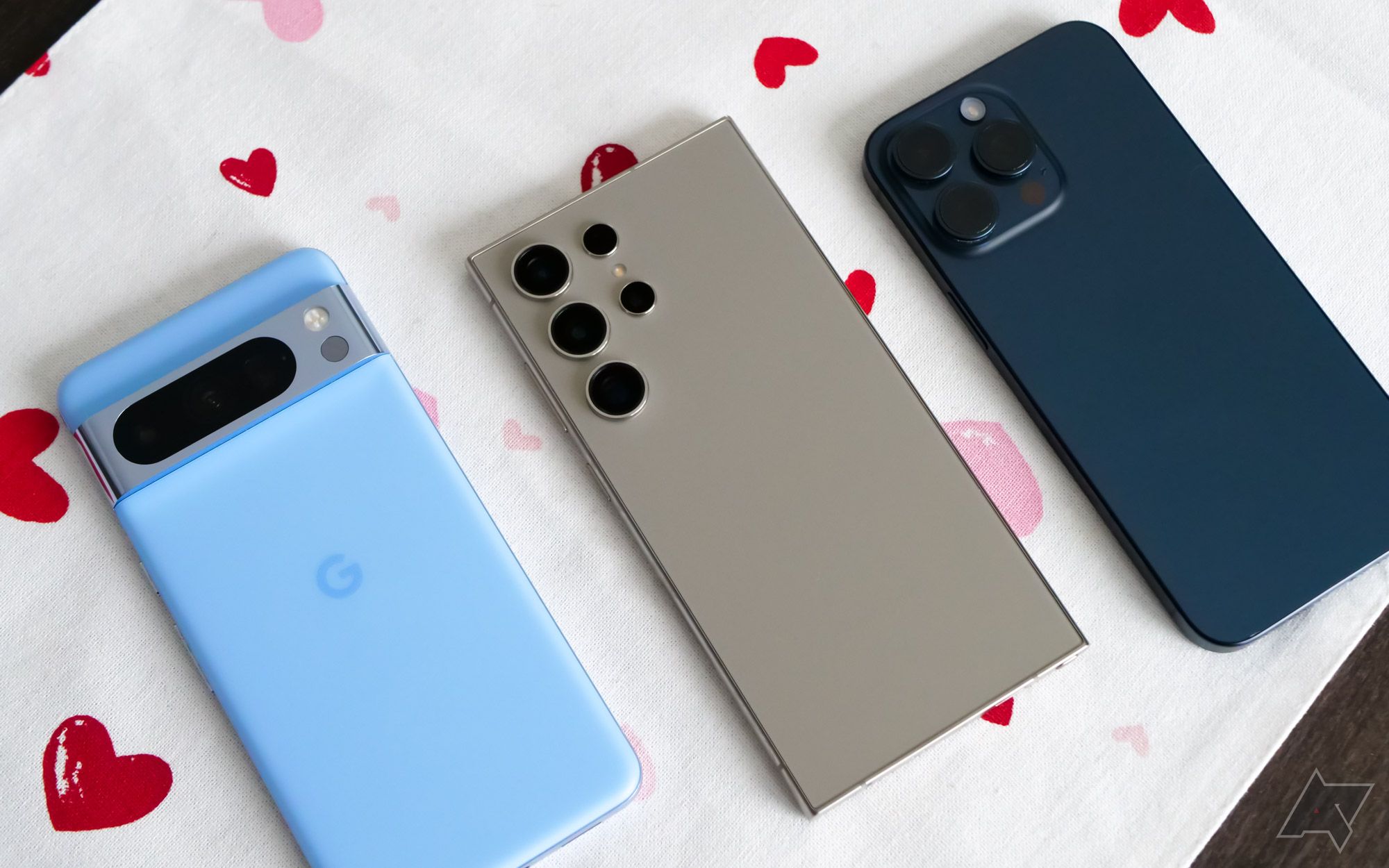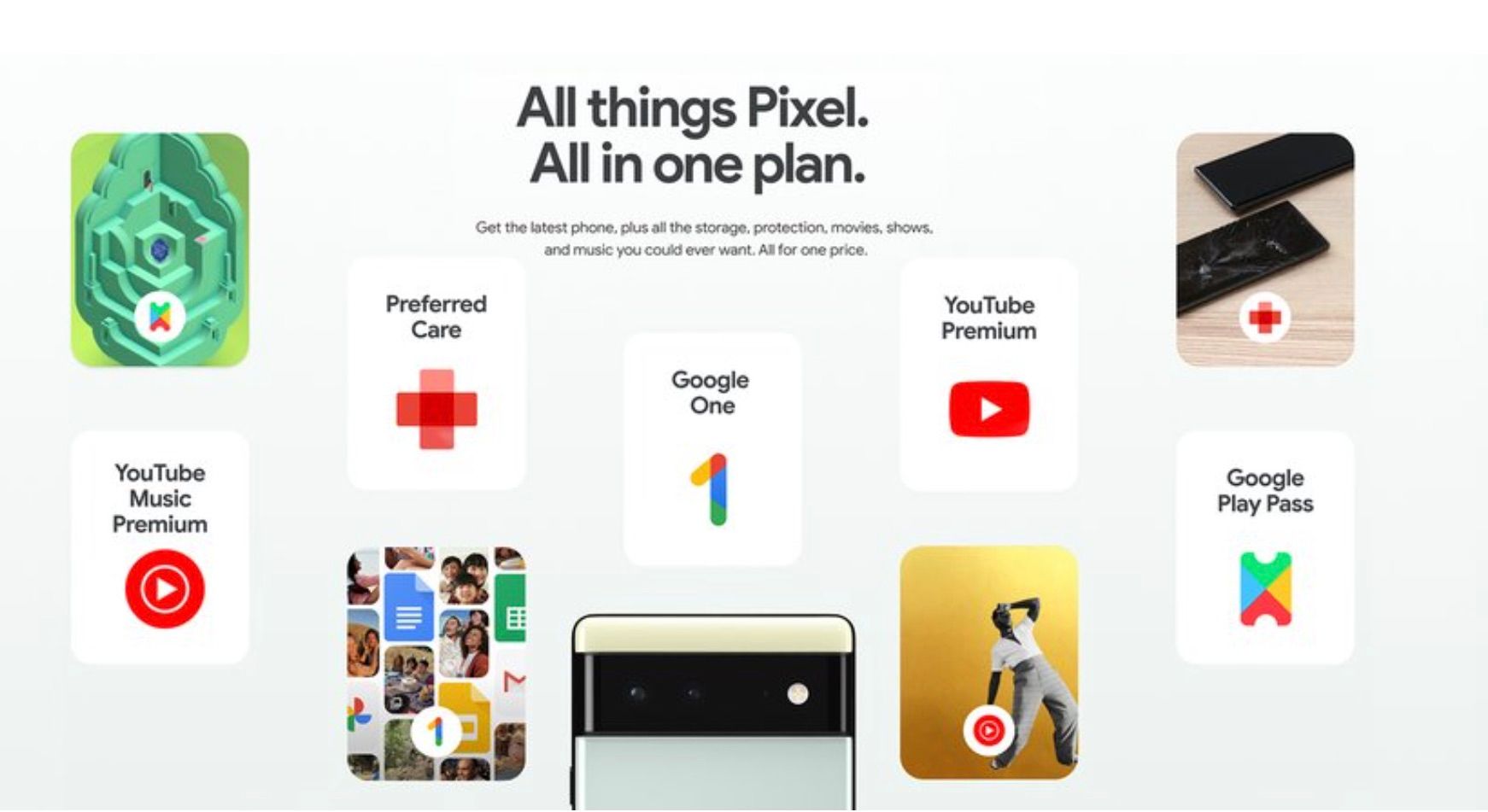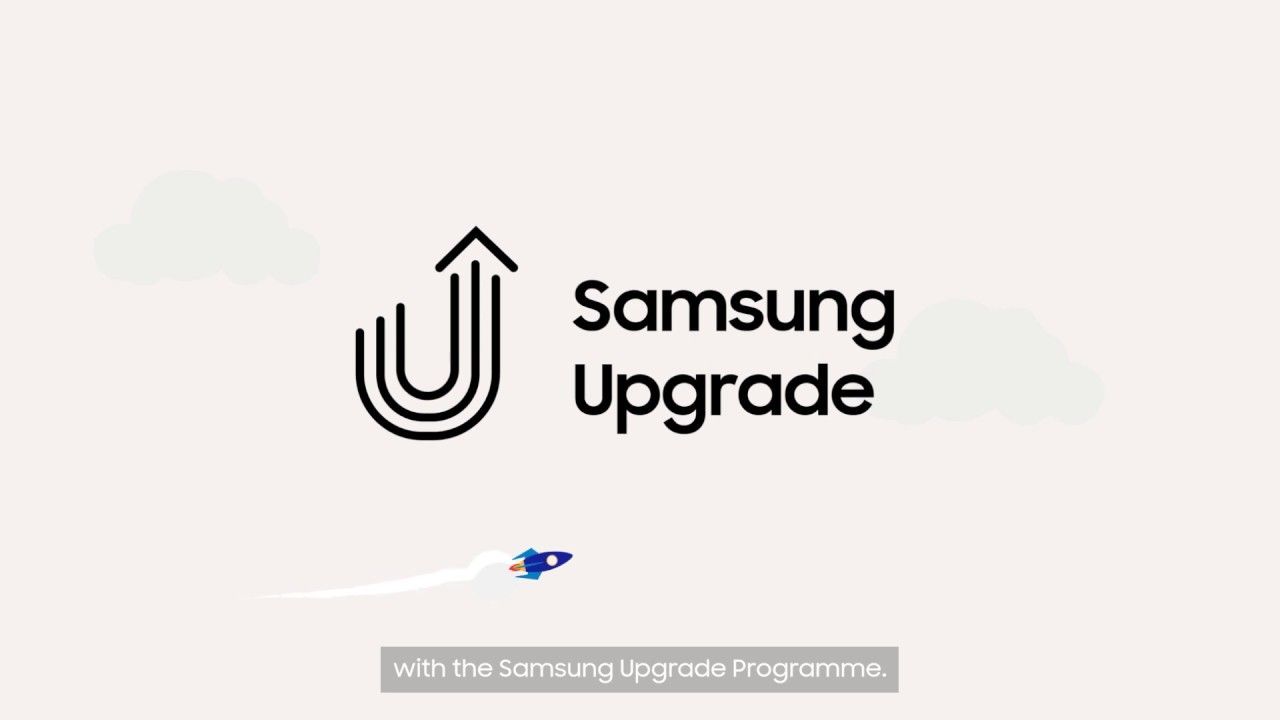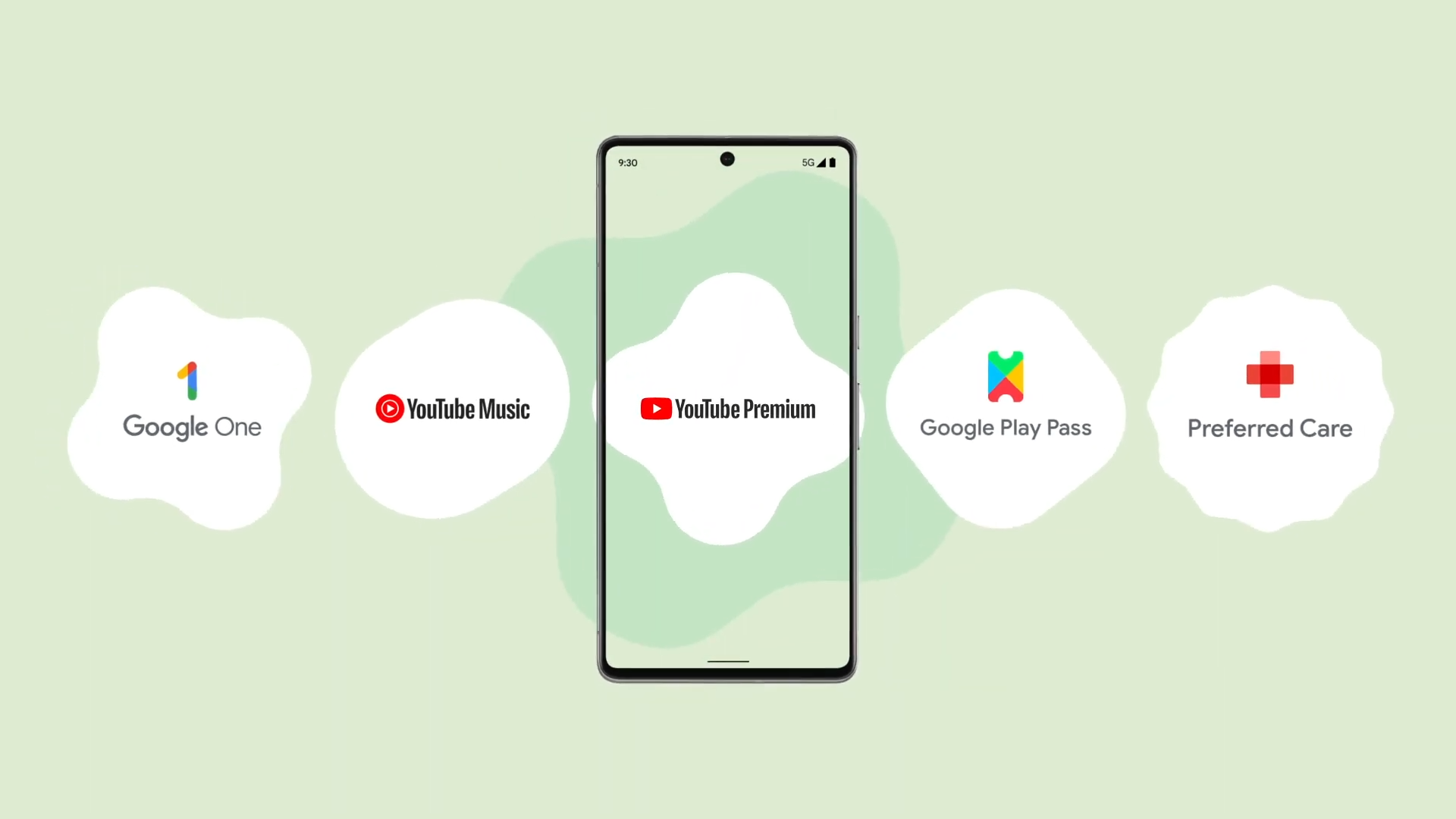Galaxy Upgrade Program. Pixel Pass. These are just two examples of Android makers attempting to launch their versions of Apple’s iPhone Upgrade Program, but the world’s biggest companies consistently haven’t figured out how to do this. Google no longer promotes the Pixel Pass — one of the most fleeting initiatives on the Killed by Google list — and Samsung only offers the Upgrade Program in some countries.
Yet, Google is the eponymous leader of the Android ecosystem, and Samsung is the world’s largest smartphone manufacturer with phones sold in every country that Apple operates in. What makes the iPhone Upgrade Program special enough that Apple has achieved success where no other company has been able to? Is there any way that Samsung, Google, or any other Android maker could compete?
So, what exactly is the iPhone Upgrade Program?
Phone subscriptions aren’t technically new, as they are a variation of how carriers have been offering phones to their customers for decades. Instead of combining your phone purchase with your airtime plan, a phone subscription splits these purchases apart. In some cases, carriers offer these directly — which will often go by carrier financing or EIP (as T-Mobile calls it) — but they are subscriptions by any other name. Most of the time, a phone maker offers their customers a subscription directly.
The iPhone Upgrade Program was the first time a major company like Apple attempted a subscription. Its success has come down to a few reasons, one being key: Apple has significant leverage and control over its carrier partners. Since the original iPhone, Apple has approached its carrier relationships differently from every other phone maker — it sets the terms rather than letting carriers dictate the payment terms and deals. This, coupled with the demand for the iPhone, meant carriers needed Apple instead of Apple needing carriers, which remains true almost 17 years later.
.JPG)
Google Pixel Pass explained: What it is and how to save money on your Pixel
Everything you need to know about Google’s phone subscription package
The iPhone Upgrade Program essentially ties you into a two-year plan for your new iPhone with AppleCare+ for the life of the plan, all in one monthly payment direct to Apple. Unlike a carrier contract where you may have to pay fees or charges to upgrade to a new iPhone sooner, the iPhone Upgrade Program lets you upgrade to a new iPhone after 12 payments — i.e., just in time for the next iPhone — as long as you trade in your existing iPhone.
Why the iPhone Upgrade Program is so good for Apple
A 2020 survey found that 36% of US iPhone owners were members of the iPhone Upgrade Program, and 25% planned to become members. These numbers helped Apple achieve the key goal of the iPhone Upgrade Program: ecosystem tie-in.
The iPhone Upgrade Program was first launched in 2015 in response to a key problem for Apple: customers were keeping their phones for longer between upgrade cycles. The iPhone has always been the golden goose that filled Apple’s coffers, and customers waiting to upgrade meant less money flowing into the pot.
Given that users are tied into a 24-month agreement with Apple but have the option to upgrade to a new iPhone at the 12-month mark, it also incentivizes upgrades every year. In turn, this increases the guaranteed revenue for the company and ultimately has helped Apple become the behemoth it is today. Apple doesn’t break out the numbers for individual programs like the iPhone Upgrade Program, but it’s safe to say that it is likely the single largest revenue generator of all iPhone sales channels each year.
Google and Samsung’s best efforts so far
Google launched the Pixel Pass in 2021 alongside the Pixel 6, and despite it being a two-year subscription program, it killed the program 22 months later, before the Pixel 8. Those customers who thought they were buying into the ability to upgrade to a new Pixel every two years (albeit without needing to trade in your phone at the end) and get services and protection built in at a discounted price? Ultimately, it was tough luck and proved why you should never trust Google to deliver anything other than its core services over an extended period.
Google’s response also irks me a year later. It effectively said it wouldn’t be offering refunds — despite killing this program just before the two-year renewal period for Pixel 6 owners — because you can “still upgrade your Pixel device after 24 months.” Technically, you can, but even a $100 loyalty reward credit for all active subscribers doesn’t lessen the blow.
The Samsung Upgrade Program was launched in 2017 alongside the Galaxy S8 and offered a similar service to the iPhone Upgrade Program. It was available in many countries — including many of the same countries as the iPhone Upgrade Program — but for the Galaxy S24 launch this year, the Samsung Upgrade Program was replaced by Samsung Flex. This effectively changed the deal from guaranteed upgrades every year to a financing package over 14 or 26 months and no guarantee of an upgrade when you trade in your old phone.
The change in terms to 14 or 26 months also meant you could no longer upgrade to a new phone with every release of the Galaxy S series. Instead, you had to wait—presumably by design, until pre-order demand had died down and miss any pre-order offers. You could return your phone, but it’ll only remove the last month’s payment, which is objectively bad value for a one or two-year-old Samsung flagship phone.
Can Google and Samsung ever compete?
Sadly, it’s unlikely that Google or Samsung will be able to deliver an experience akin to the iPhone Upgrade Program. Whether through internal pressure around overall sales numbers and/or carrier pressure to ensure customers were upgrading through carriers directly, both companies have killed their subscription programs.
A further challenge here makes the iPhone Upgrade Program compelling and the Pixel Pass / Samsung Upgrade Program far less compelling: support. Google and Samsung support is objectively far inferior to Apple’s, especially as the latter has an extensive global retail network that can be turned to when your phone is damaged. The iPhone Upgrade Program comes with AppleCare+ included and the guarantee of timely service when things go wrong. In contrast, you have to call Google to organize repairs, and with Samsung, you have to rely on its partnership with Asurion, aka uBreakiFix.

My stolen iPhone experience proves Android users shouldn’t be jealous of AppleCare
AppleCare+ Theft and Loss isn’t as great as you might expect
The Pixel Pass was interesting as it included a Pixel phone, Preferred Care (Google’s answer to AppleCare+), and services like Google Play Pass, Google One, and YouTube Premium, all at a discounted rate compared to purchasing them individually. It was a very Google-like offering, and while it had a lot of promise, it also ended in a very Google-like way. Then again, with all the Google-support horror stories, should we be surprised?
Nirave is a creator, evangelist, and founder of House of Tech, which focuses on covering the best health and technology products. Following a heart attack at the age of 33, he’s been focused on the impact of technology in helping us live a longer, more fruitful and happier life. Follow him on Instagram, Threads, and YouTube for more updates on his journey. He can also be found at HoT.tech, and his Impact Newsletter is at impact.hot.tech.
Source link

